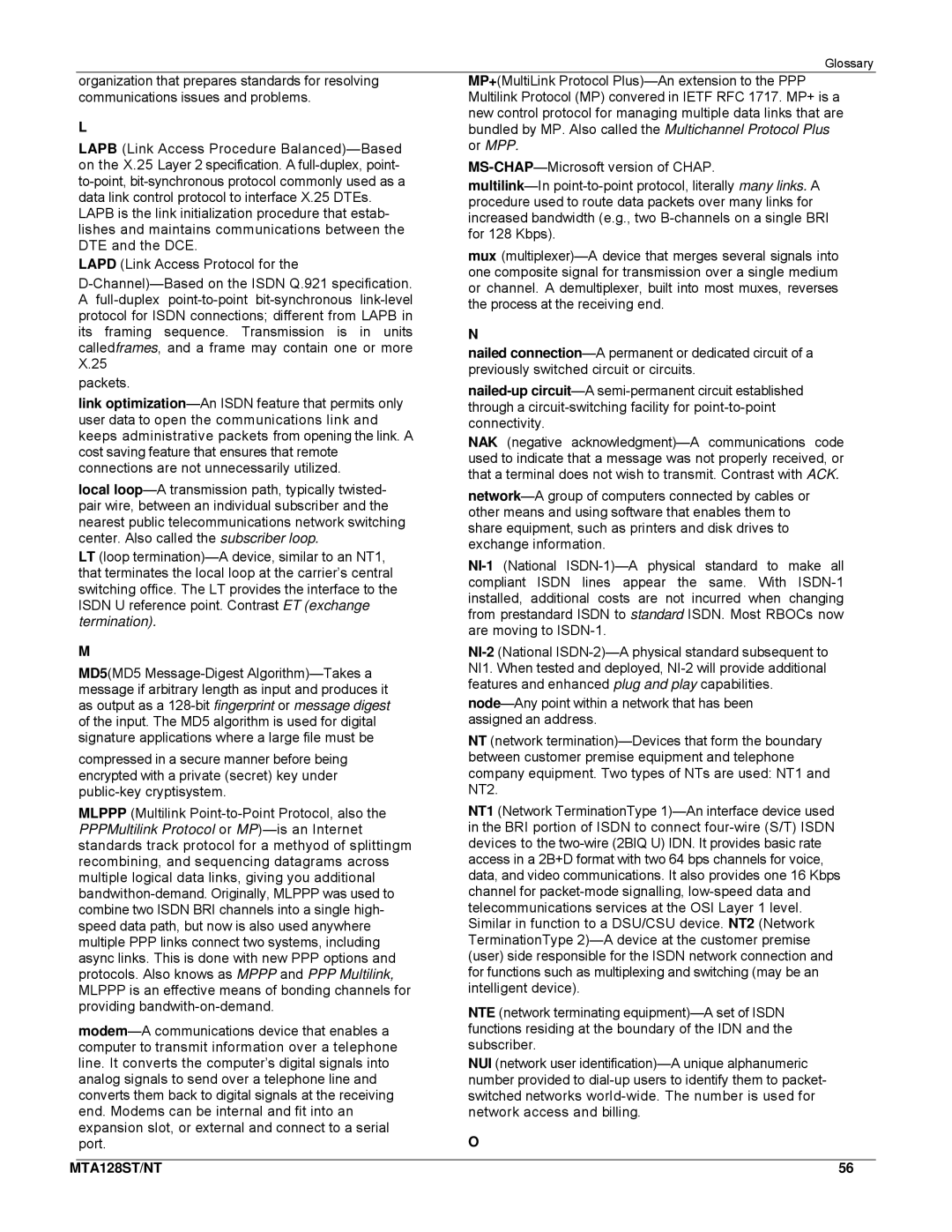Glossary
organization that prepares standards for resolving communications issues and problems.
L
LAPB (Link Access Procedure
LAPB is the link initialization procedure that estab- lishes and maintains communications between the DTE and the DCE.
LAPD (Link Access Protocol for the
packets.
link
local
LT (loop
MP+(MultiLink Protocol
mux
N
nailed
NAK (negative
| M | |
| MD5(MD5 | NI1. When tested and deployed, |
| features and enhanced plug and play capabilities. | |
| message if arbitrary length as input and produces it | |
| as output as a | |
| of the input. The MD5 algorithm is used for digital | assigned an address. |
| signature applications where a large file must be | NT (network |
| compressed in a secure manner before being | between customer premise equipment and telephone |
| encrypted with a private (secret) key under | company equipment. Two types of NTs are used: NT1 and |
| NT2. | |
| MLPPP (Multilink | NT1 (Network TerminationType |
| PPPMultilink Protocol or | in the BRI portion of ISDN to connect |
| standards track protocol for a methyod of splittingm | devices to the |
| recombining, and sequencing datagrams across | access in a 2B+D format with two 64 bps channels for voice, |
| multiple logical data links, giving you additional | data, and video communications. It also provides one 16 Kbps |
| channel for | |
| combine two ISDN BRI channels into a single high- | telecommunications services at the OSI Layer 1 level. |
| speed data path, but now is also used anywhere | Similar in function to a DSU/CSU device. NT2 (Network |
| multiple PPP links connect two systems, including | TerminationType |
| async links. This is done with new PPP options and | (user) side responsible for the ISDN network connection and |
| protocols. Also knows as MPPP and PPP Multilink, | for functions such as multiplexing and switching (may be an |
| MLPPP is an effective means of bonding channels for | intelligent device). |
| providing | NTE (network terminating |
| functions residing at the boundary of the IDN and the | |
| computer to transmit information over a telephone | subscriber. |
| line. It converts the computer’s digital signals into | NUI (network user |
| analog signals to send over a telephone line and | number provided to |
| converts them back to digital signals at the receiving | switched networks |
| end. Modems can be internal and fit into an | network access and billing. |
| expansion slot, or external and connect to a serial | O |
| port. | |
|
|
|
MTA128ST/NT | 56 |
